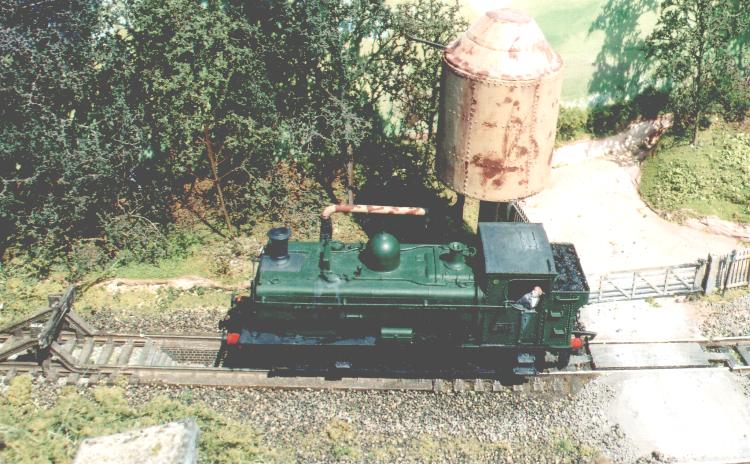 |
"No. 5704, one of the earlier type, sits over the inspection pit. "
indent There is little difference between
the early members of the 57xx class and the later variants, sometimes called the 87xx
class. Naturally when a class of engines is built over a number of years some
variation is bound to occur but the only difference which is immediately obvious is that
the early versions had this single arc-roofed cab whereas the later ones had rounded
corners between the cab-side and the roof - an amendment which allowed much larger cab
windows back and front. There were also a few minor variations, such as the position
of the front cab step which was moved nearly a foot further back in the later engines
while there were other differences between certain members of the class - as always, study
photos of the real thing to see what you can spot!
indent This engine is used on the passenger services not
covered by our next model, the railcar. Naturally one could use a completely
different type of engine but Panniers generally were far and away the most numerous of the
GWR tank engines and a line which used them for one service often used other variations of
the type for most, if not all, of the other services - a fact which is probably what led
the one-time editor of RM when offering his opinion on engine choice for GW model railways
to famously state, "If in doubt, add another Pannier"!
indent This model is based on the older Bachmann/Mainline production and as such needed just a little more work than the newer one but it was, and remains, an excellent and reliable model (although this one, to be frank, is rather worn out and could do with a new chassis. It might get a new one from the latest model one day - when the works is less busy...). Additions are much as before except that being an older engine by a few years it retains the full pre-1935 "GREAT WESTERN" lettering along the tank sides; by now getting rather faint. In fact on many photos of this period the lettering is either quite invisible or very nearly so; although the former could be owing to a war-time repaint when transfers were soon dispensed with.
| Previous photograph in series | Back to "Upper Isis Room" entrance | Next photograph in series |